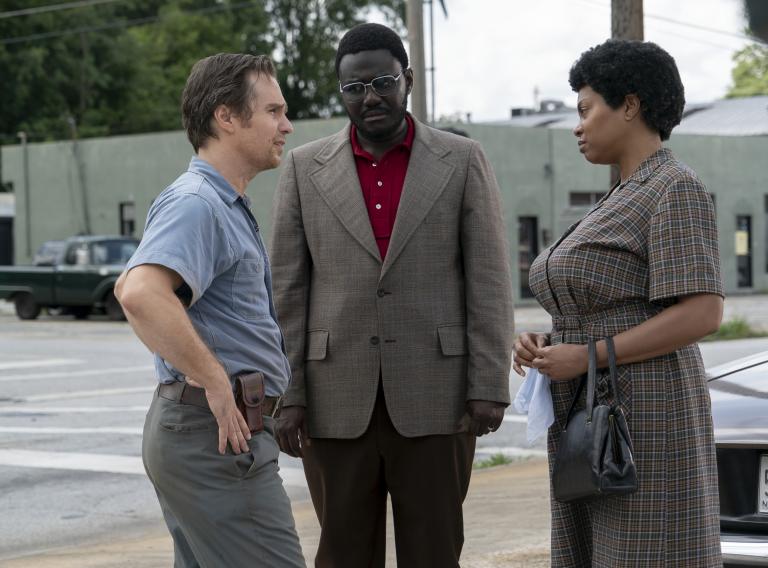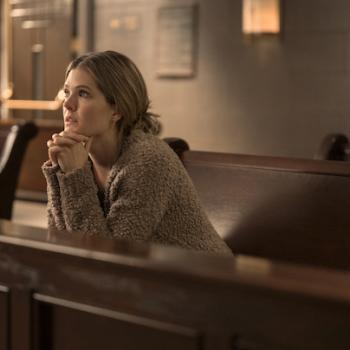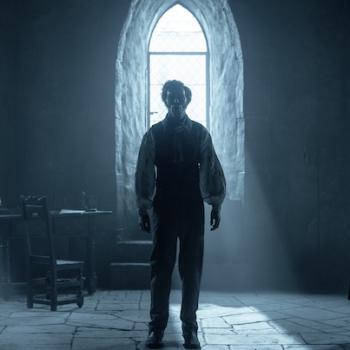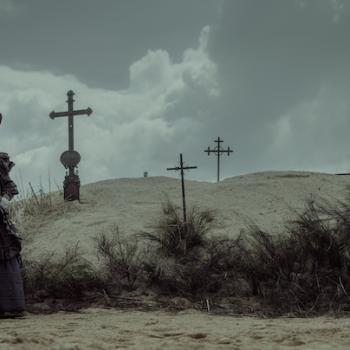
Durham was a powder keg in 1971, according to the film The Best of Enemies. The North Carolina city was deeply segregated and virulently polarized. And when the subject of school integration was foisted on the community, it looked like it just might be the match to set the whole thing off.
Bill Riddick (played by Babou Ceesay) walked into that seething city with an optimistic idea: Gather the issue’s biggest stakeholders for what he called a charrette—10 days worth of meetings which, ultimately, would decide whether Durham’s schools would be de-segregated or not. He’d facilitate the charrette, but the event needed two local leaders to chair the thing—and he chose two folks who not only stood on opposite sides of the issue, but hated each other’s guts: Civil rights activist Ann Atwater (Taraji P. Henson and Ku Klux Klan leader C.P. Ellis.
The Best of Enemies, coming out April 5, is based on a true story, and I recently talked with the real Bill Riddick. He says the real events that took place at the 1971 charrette were just as remarkable as the movie suggests. Read the interview and see what I mean. (But caution: There is a bit of a spoiler.)
***
Paul Asay: Bill, obviously you were intimately familiar with what went on at that 1971 charrette in Durham. Did the movie reflect the reality?
Bill Riddick: It did. … I was involved in the first writing of the script. [In fact] I was involved before the writing of the script. And my only issue was that the movie be accurate, that it reflect what happened. I could not be part of it if it did not reflect what happened. [Director/screenwriter] Robin Bissell did a fantastic job of staying with the facts.
Asay: You mention late in the film that you nearly left that first day at Durham.
Riddick: That first day was crazy, man, and issues came up that were just bad. First of all, I had to deal with my own biases. I didn’t like C.P., you know. How could you like a Klansman in 1971? We don’t like them this year, but in 1971, it was a lot worse because they were more vocal. And Ann was just out of her lane also. It was a mess. I had to look at myself, because I had biases against both of them. And it was coming right back at me from them. So I just decided that I was going to accept them for who they were and accept the ground they stood on. With a charrette, you have to bring all [of the issues] to a conclusion. And I focused on what I wanted at the end rather than what was happening in that moment.
Asay: It must’ve felt crazy, stepping into a situation like that. I mean, working with a Klansman like C.P.? I’m not even sure if that would be conceivable today.
Riddick: The guy who got me involved in all of this knew C.P.—the guy who was the head of the North Carolina AFL/CIO labor union. … On my first visit that I made to C.P.’s service station, C.P. listened because of the guy who sent me. He had to figure that there was some legitimacy in this. Something here that I best take a look at, because he had respect for this guy and I had respect for this guy.
Asay: The whole concept of the charrette seems so simple in some ways—just getting people who disagree to sit down and talk with each other, face to face.
Riddick: That is very true. … There are individuals who are pro and individuals who are con. And [in Durham,] we had two people who spoke loudly: C.P. and Ann. So when I got to Durham and put together a steering committee, it was obvious to me that these two people should become the co-chair of the charrette committee.
Asay: Let’s fast-forward to the end of the movie, when C.P. stands up and tears up his KKK card—a card that had been deeply important to him. I read somewhere that it was maybe the greatest feeling you’ve ever had in your life, seeing that happen.
Riddick: Take my family out of it, and yes. I had never been, and since that time, so touched. [Here’s this] individual standing there—and after all the hatred I had seen in him the previous days—and he tears up his card. I think he said, ‘if schools are going to be better by me tearing up this card, I will tear it up.’ And it was a moment I will never forget.
Asay: And you had no idea it was coming, right? No one did.
Riddick: My first idea [that evening] was to not even let he and Ann speak. … But when he tore the card up, that was the conclusion. The charrette was over with. That we had said loud and clear that de-segregation was the place to be and the place to go and we had to do that. It was magnificent.
Asay: In the film, family is a huge catalyst in bringing Ann and C.P. together. But the movie suggests that faith played a pretty big role, too. Do you think God was there in the midst of this charrette process?
Riddick: Obviously. I did not see it then. Ann’s day-to-day attitude and character did not remind me of a Godly walk. C.P. did not remind me of a godly walk. But looking back, I do think that there were two things happened that were significant. First, C.P. went to Ann’s church. And I was shocked that he went. But it was a good church, and Ann was a whole different person at church. And I said, wow, this is really strange.
The second part, though, that might have been the real turning key, was that both of them [had children who were struggling]. … And I think because they had the same problem, and they could talk to each other about that same problem, that gave them a platform to stand on, and a sense of looking at desegregation and looking at themselves.
Asay: Obviously, we live in a really polarized time. What lessons do you think modern audiences can take away from this story?
Riddick: I feel that the issues we are having today are individually sparked in the sense of how we think and feel about our own biases. I think if people could learn from the movie that you can go home and just look in the mirror, and look at their own biases, and why they have these biases, and then try to become a better person when they step out to work and play or wherever they’re going, that this country can heal itself. It’s not going to heal itself, I don’t think, by bringing groups together to do this or to do that. But it’s an individual change that I think must occur among good-willed people of the United States of America.
The Best of Enemies comes to theaters April 5.












